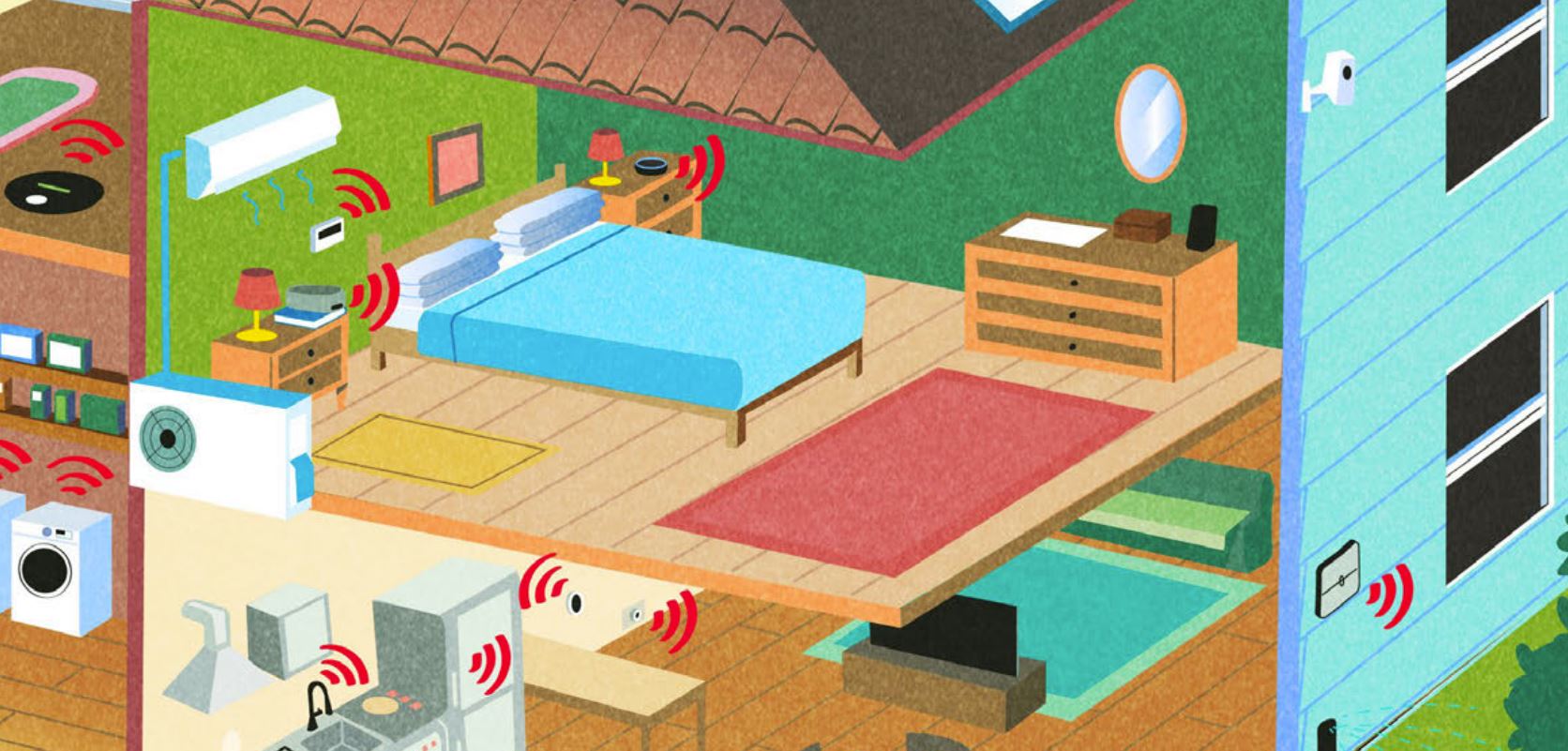The use of robotics in manufacturing and service industries is expected to mushroom over the next 10 to 15 years, forcing significant changes in the way many companies do business, and posing opportunities -- and problems -- for workers.
The predicted expansion reflects several developments:
--Stunning technological advances that are broadening the array of tasks that robots can perform, well beyond the dull, repetitive or dangerous jobs for which they've been used up to now. Although most of the of new robots will be bought by manufacturing firms, they'll also be used in everything from distribution centers to medical facilities.
From just $107.88 $24.99 for Kiplinger Personal Finance
Become a smarter, better informed investor. Subscribe from just $107.88 $24.99, plus get up to 4 Special Issues

Sign up for Kiplinger’s Free Newsletters
Profit and prosper with the best of expert advice on investing, taxes, retirement, personal finance and more - straight to your e-mail.
Profit and prosper with the best of expert advice - straight to your e-mail.
--The dramatically declining costs of robots over the past few years, making robots more affordable (and attractive) to a wider range of businesses and, for the first time -- to smaller and medium-size firms. Small companies will use them to bring down production costs. For instance, Rethink Robotics's new Baxter business robot costs $22,000.
--The development of new sensors and the use of lighter-weight materials, making robots safe enough and easy enough for humans to work with them, side by side. Plant owners will no longer have to confine robots to "caged" areas on one side of the factory where they can't injure company personnel.
--Innovations in artificial intelligence (AI) -- sophisticated software enabling robots to take on humanlike capabilities, processing huge amounts of data acquired from sensors and exercising some rudimentary "judgment." That's opening horizons for robot designers and will lead to increasingly more capable robots.
Also a key factor: the shift in the relative costs of labor and capital over the past 15 years. Wages and compensation have become a larger share of manufacturers' expenses, while continuing low interest rates have made the price of borrowing relatively lower. The combination makes automation more attractive than ever.
The robotics explosion won't be confined to the United States. Japan already is No. 1 in employing robots. China also has begun investing heavily in robotics, and Europe, too, is moving quickly to embrace the new technology. Asian tigers such as South Korea and middle-income countries such as Brazil and India won't be far behind.
Much of the expansion will come in manufacturing. Some 65% of the robots sold in the U.S. have been used in automobile production, where robots weld, rivet and handle materials. Soon auto companies will begin using more-sophisticated robots in the final assembly phase of production.
But robots also are taking over other jobs and skills, from industrial packaging and distribution to pharmaceutical manufacturing. And they'll get into food packaging, electronics assembly, meat-cutting, warehousing and even more medical procedures. Eventually, they'll help provide home care for seniors.
"We're going to see robots going into industries where they've never been used before as well as markets where they've never been before," says Jeff Burnstein, president of the Robotic Industries Association, the U.S. industry's trade group.
The expansion of robotics is likely to mean a big boost in productivity -- and faster economic growth, says Erik Brynjolfsson, an MIT economist who has followed the technological advances. Over time, it also could create millions of new jobs, as the increased use of computers and the Internet did in the 1990s.
Indeed, some economists argue that installing low-cost robots to do many jobs will help accelerate the return of low- and middle-level manufacturing that was outsourced in the 1970s and 1980s to low-wage countries such as China, India and Mexico. Rising wages in these countries are spurring some U.S. firms to bring production home.
Labor Department figures show that productivity, or output per work-hour, surged by an average of 2.7% between 1995 and 2000 -- when computerization made its biggest impact -- from an average rise of 1.5% between 1987 and 1995. Efficiencies from computerization and the purchase of equipment and software accounted for 81% of the peak-period gains.
Economist W. Brian Arthur of the Intelligent Systems Lab at Palo Alto Research Center Inc. believes that U.S. productivity could well begin growing at a 2% to 3% annual rate over the next decade as robotics takes hold, while America's actual economic output could double over the next 20 to 25 years -- to $31.6 trillion.
Harold L. Sirkin, a manufacturing specialist at the Boston Consulting Group, predicts that over the medium term, job opportunities will expand because automation will make goods and services so much less expensive that people will want to buy more of them. "That probably means it'll leave companies with more employees, not fewer," he says.
But the shift won't be pain free. While job opportunities could multiply rapidly as the robotics revolution goes into full swing, many workers will lose their jobs. And technological advances will make robots capable of performing tasks that are higher and higher up the skill ladder, threatening white-collar jobs as well as blue-collar ones.
"I think this will be a radically deep change -- the biggest change that we've had since the industrial revolution," Arthur says. With technology advancing and the relative costs of automation coming down, "it's as if the lights just went on for robots in the workplace," he says. "Up until now they've been working in the dark."
David Autor, an MIT economist who has chronicled the squeeze on low-skilled workers since the start of computerization, warns that the expected spread of robotics over the next five to 10 years is likely to broaden the "hollowing-out" of the job market, unless the U.S. can improve its education and training for such workers.
To ease the impact of the shift, the U.S. will have to make major changes in the way businesses are structured and how workers are educated and trained, Autor says.
Julie Shah, a professor at MIT's Computer Science and Artificial Intelligence Laboratory, says businesses need to design special processes that will enable humans and robots to interact and work as teams. That means more joint assembly jobs that capitalize on the advantages of each, along with special programmers to keep the robots working.
None of that will be easy. The nation is divided over how to improve education. Job training programs and technical schools will need substantial upgrading. And if the recent past is any example, reformers will meet resistance from unions, local communities and politicians worried about job losses among their constituents.
A bumpy transition is all but guaranteed.
Profit and prosper with the best of Kiplinger's advice on investing, taxes, retirement, personal finance and much more. Delivered daily. Enter your email in the box and click Sign Me Up.

-
 How to Safely Open an Online Savings Account
How to Safely Open an Online Savings AccountOnline banks offer generous APYs that most brick-and-mortar banks can't match. If you want to make the switch to online but have been hesitant, I'll show you how to do it safely.
-
 7 Ways to Age Gracefully Like the Best Stock Photo Seniors
7 Ways to Age Gracefully Like the Best Stock Photo SeniorsAs a retirement editor, I've gleaned valuable wisdom (and a lot of laughs) from one older couple that tops the seniors' stock photo charts.
-
 My First $1 Million: Banking Executive, 48, Southeast U.S.
My First $1 Million: Banking Executive, 48, Southeast U.S.Ever wonder how someone who's made a million dollars or more did it? Kiplinger's My First $1 Million series uncovers the answers.
-
 When Tech is Too Much
When Tech is Too MuchOur Kiplinger Retirement Report editor, David Crook, sounds off on the everyday annoyances of technology.
-
 I Let AI Read Privacy Policies for Me. Here's What I Learned
I Let AI Read Privacy Policies for Me. Here's What I LearnedA reporter uses AI to review privacy policies, in an effort to better protect herself from fraud and scams.
-
 What Is AI? Artificial Intelligence 101
What Is AI? Artificial Intelligence 101Artificial intelligence has sparked huge excitement among investors and businesses, but what exactly does the term mean?
-
 The 27 Best Smart Home Devices
The 27 Best Smart Home Devicesgadgets Innovations ranging from voice-activated faucets to robotic lawn mowers can easily boost your home’s IQ—and create more free time for you.
-
 How to Choose the Right Payment App
How to Choose the Right Payment Appbanking Using PayPal, Venmo, Zelle and other apps is convenient, but there are pros and cons to each.
-
 Shop for a New Wireless Plan and Save Big
Shop for a New Wireless Plan and Save BigSmart Buying Competition is fierce, and carriers are dangling free phones and streaming subscriptions.
-
 Watch Out for Job Listing Fraud
Watch Out for Job Listing FraudScams If one of your New Year’s resolutions is to find new employment in 2022, be on guard against job-listing scams.
-
 Virtual Numbers Add Security to Credit Card Shopping
Virtual Numbers Add Security to Credit Card ShoppingTechnology Some mobile wallets offer this feature, which randomly generates virtual digits that are linked to your credit card.
